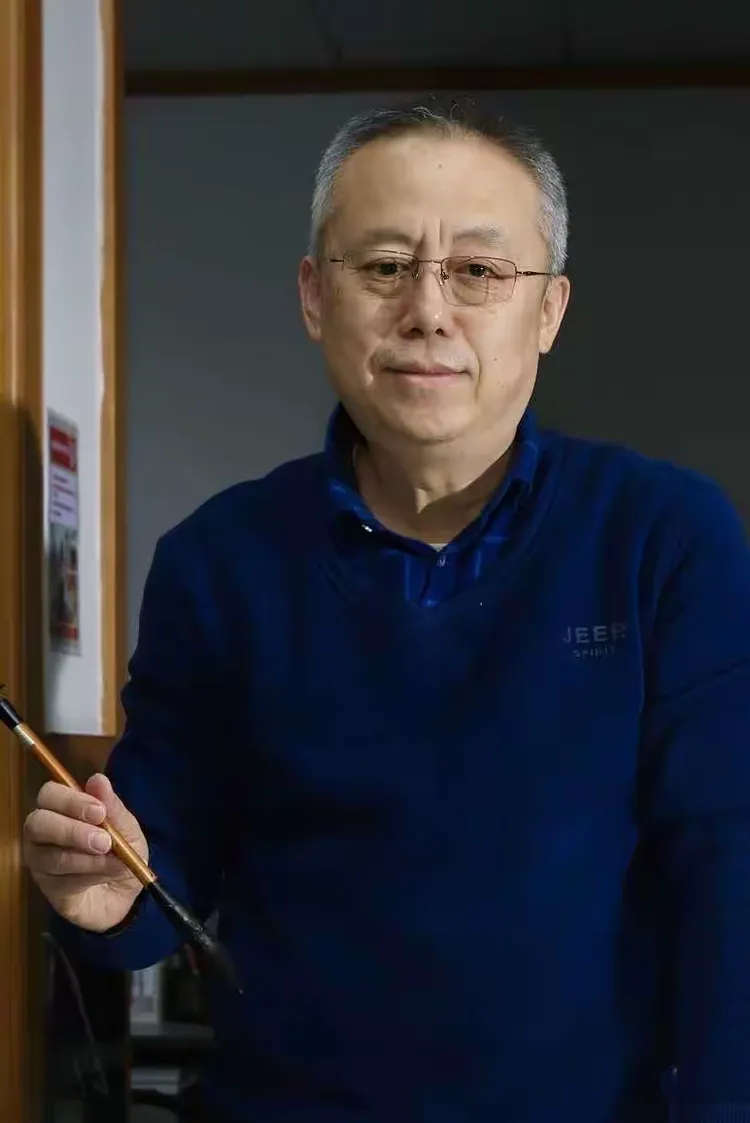About Us
About He Vikon and His Black Paintings

Vikon He is from the Manchu He Sheli clan, one of the eight major clans of the Manchu people, who have always valued cultural cultivation. From the records preserved by the He family, it can be seen that his great-grandfather, grandfather, and father were all skilled in calligraphy and were cultural celebrities. His grandfather graduated from Northeastern University at the beginning of the Republic of China and had a very high level of calligraphic accomplishment (see attached figures 1 to 3).
It is evident that the factor of cultural heritage has been flowing in He Weigang's blood since his great-grandfather bestowed upon him the name "Dongsheng" when he was young, expressing his expectations for him in the future.
When He Weigang was four years old, he followed his parents in response to the call for support of the Third Front construction and moved from Shenyang to Nanchuan County, Sichuan Province at that time, which is now Nanchuan District, Chongqing. There, he spent twelve springs and autumns. In 1978, the college entrance examination system was restored, and He Weigang, who had just graduated from junior high school to enter the first year of high school, was admitted to Xi'an University of Technology (then known as Shaanxi Machinery Institute) at the age of 16. After graduating from university in 1982, he was assigned to Dalian and entered a certain institution to work until his retirement.
He Weigang pursued a degree in science and engineering management at university, and in his spare time, he was deeply fond of painting (see attached figure 4). At the same time, he was deeply rooted in his love for traditional culture, which always surged deep within him. After starting work, he immersed himself in the study and reading of classic texts such as 'I Ching' and 'Tao Te Ching', from Confucianism, Buddhism, and Taoism. These cultural treasures gradually nourished his artistic perception. It was precisely because of this that when he later engaged in photography and calligraphy creation, the 'Zen' essence, which contained Eastern wisdom, naturally integrated into each work, becoming a unique and charming mark in his artistic expression.
In the field of traditional Chinese cultural art creation, 'Zen' can be regarded as the ultimate ideal pursuit for Chinese literati and artists. It is capable of exquisitely blending the formal beauty in artistic works with thoughtfulness, philosophical depth, and life perspectives, achieving a near-perfect expression.
For decades, He Weigang has devoted a great deal of his heart and soul to photography and the world of Chinese literati calligraphy and painting. He plunged into this field with dedication, delving deeply into exploration and heartfelt creation, striving to showcase the unique charm of "Zen" in his works.
He Weigang specializes in panoramic photography and Zen-inspired photography in the field of photography. In 2008, China Photography Publishing House published his personal photography collection "≥180° He Weigang Digital Panoramic Photography." The following year, in 2009, he joined the China Photographers Association for his outstanding photographic achievements. (See attached figures 5 and 6)
